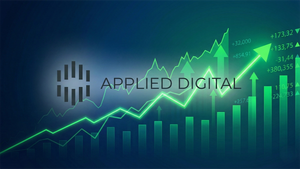
The financial landscape in 2025 is evolving quickly. Rising interest rates, AI-driven lending, and the growth of digital assets are changing how people access, manage, and move money. As traditional banking adapts to faster, more flexible alternatives, individuals are rethinking how they borrow and repay.
Short-term loans are playing a growing role in this shift. With quick approval, clear terms, and adaptable structures, they align with modern financial habits. Minimal documentation allows borrowers to secure funds rapidly, avoiding lengthy paperwork or extensive credit checks. Here’s how short-term loans are being used with greater purpose, flexibility, and reach in 2025:
Strategic Debt Management
Short-term loan applications rose by 11% year-on-year in Q2 2025, according to the Bridging Trends report. One reason for this is the drop in average monthly borrowing costs, which fell to 0.81%. More importantly, the rising applications reflect sustained market activity and growing borrower confidence in short-term lending solutions.
It’s also reported that regulated refinance rose by 76% and unregulated refinance by 63% between Q1 and Q2. This shift suggests that short term loans are being used as a proactive financial tool to help borrowers reduce repayment burdens, lock in lower costs, and improve cash flow. Short-term credit is now at the center of strategic debt management, not just on the margins of emergency stopgaps.
Tech-Driven Household Credit Use
In Q1 2025, Hungary’s household loan market grew by 10.9% year-on-year. This surge reflects two key drivers: rising consumer goods inflation and the widespread adoption of fast, automated digital lending processes.
The data also shows that risk levels among new personal loan borrowers remain moderate, even among lower-income groups. This growth highlights how digital lending platforms are transforming household access to short-term credit. Borrowers increasingly use these loans responsibly for housing costs and planned expenses.
Cross-Generational Credit Strategies
Personal loan debt is trending upward across generations. According to FinTech Market, Gen Z and Millennials saw personal loan balances rise by 13.4% and 10.4% respectively. While both signal growing reliance on credit, each reveals distinct borrowing behaviors shaped by digital access, generational values, and financial priorities.
In particular, the increase implies Gen Z favors mobile-first, flexible options, while Millennials lean into structured debt management and long-term planning. This makes short-term loans a natural fit for both. These plans offer fast access, transparent terms, and digital convenience, which all align with Gen Z’s demand for immediacy and Millennials’ preference for strategic financial control.
Financial Recovery from Debt
In 2025, U.S. credit card debt reached $1.17 trillion, with an average rate climbing to 24%. To solve this, banks and credit unions are responding by offering digital-first solutions that support restructuring and cash flow management. Consumers, on the other hand, are adapting financial recovery strategies, including utilizing short-term loans for debt consolidation.
In fact, borrowers also figured out that short-term loans are a better fit for debt consolidation than long-term loans. While long-term loans may spread payments over several years, they often result in higher cumulative repayment costs and prolonged debt exposure. In contrast, short-term loans encourage quicker repayment and reduce the risk of accumulating new debt.
Expanding Global Demand for Unsecured Credit
The global small personal loans market is projected to grow from $31.3 billion in 2023 to $158.7 billion by 2032, with a CAGR of 20.1%. This growth reflects rising demand for fast, unsecured credit among individuals who lack access to traditional financial services. These typically include those who remained unbanked or underbanked despite advances in digital finance.
In both emerging and developed markets, short-term loans thrive where speed, flexibility, and low barriers to entry are essential. Their role continues to grow as consumers seek quick, practical, collateral-free solutions for immediate financial needs, without the delays or complexity of traditional lending.
New Era of Short-Term Lending
Short-term lending in 2025 reflects a broader shift in how consumers approach credit: with intention, speed, and digital fluence. Its growth across generations, markets, and income groups also signals a changing view of unsecured credit, from a reactive lifeline to a proactive financial strategy for personal finance. More than an emergency fix, it is now seen as a practical tool for managing cash flow and integrating credit into everyday financial planning.




